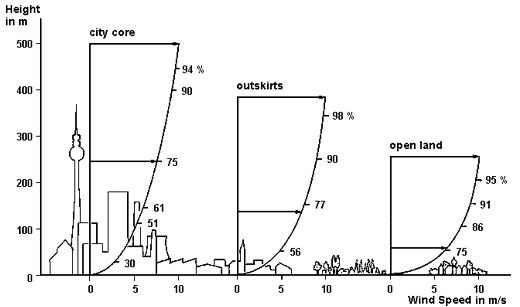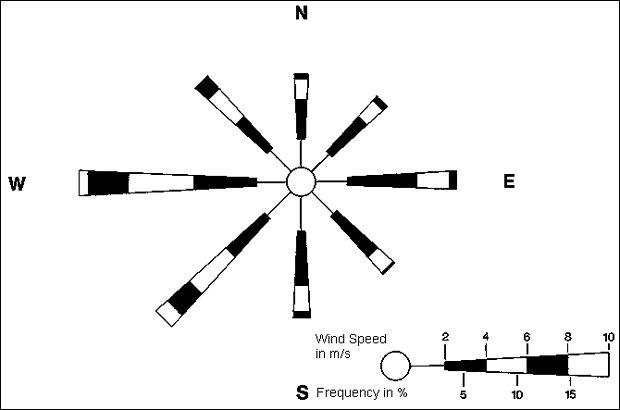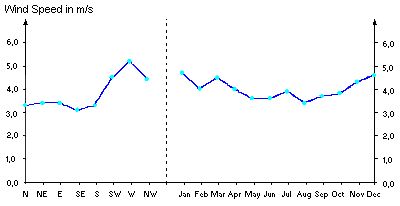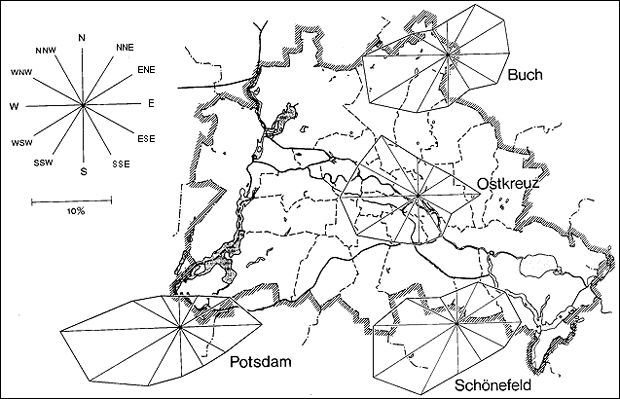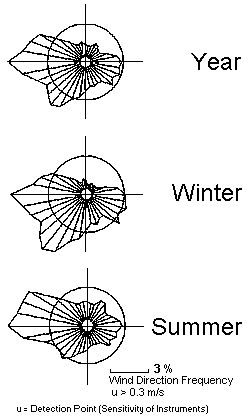Wind Conditions in Conurbations
Near ground air exchange processes have an essential significance for the air hygiene conditions and the climate of a region. The wind speed is used as a measure of air exchange. It describes the speed of the wind stream; at the same time showing that the atmosphere pulls or pushes away air masses. Within built-up areas, as opposed to the open countryside, an average of 20 – 30 % decrease in the wind speed at near ground can be expected. A simultaneous increase in the level of bio-climatic and air hygienic pollution frequently prevents the introduction of unpolluted air masses on the one hand as well as the turbulence, thinning and the evacuation of this polluted air on the other hand. In the immediate vicinity of individual building structures and in the street area, it can come however to very heavy increases in the wind speed caused by squalls and wind channelization with its accompanying unpleasant effects to persons (wind load, dust squalls, eye irritation etc.).
The wind is defined in terms of a vector of its direction and speed. The continuous wind measurements are taken, as per international agreement (World Meteorological Organization 1983), at fixed, least disturbed stations at a height of 10 m above the ground.
The decisive determinant of the vertical profile of the wind speed is the respective terrain roughness (cf. Fig. 1).

